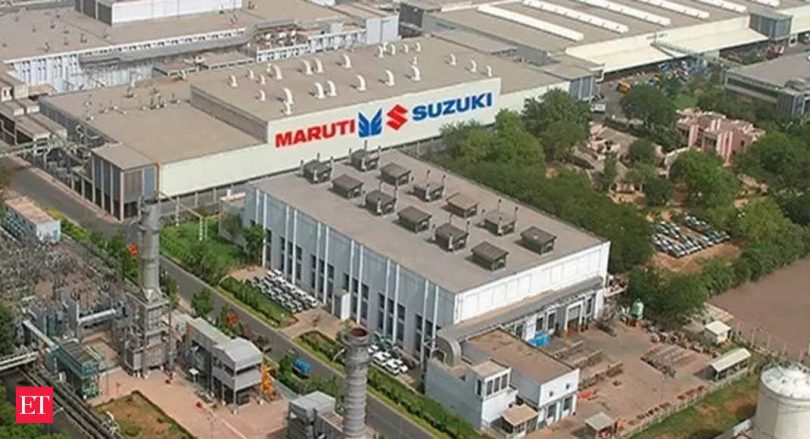[ad_1]
The country’s largest carmaker is likely to invest about ₹45,000 crore to commission eight assembly lines with annual production capacity of 250,000 units each across two new facilities, they said.
“At today’s costs, investment required for commissioning additional capacity of two million units is about ₹45,000 crore,” an industry executive told ET, seeking anonymity. “This can increase, depending on timelines for commissioning the units and cost escalation, if any.”
Construction has commenced for the first unit at Kharkhoda in Haryana.
Maruti Suzuki chairman RC Bhargava told ET the company has received approval to add capacity of up to one million units at Kharkhoda and in-principle approval for another one million units at a new site, which is yet to be finalised, but the phasing of projects and timelines for commissioning the assembly lines will depend on business requirements.
Eye on future demand
Maruti Suzuki currently has access to a total installed capacity of two million units across Gurgaon, Manesar and Mehsana, Gujarat.
“Looking at future demand, the likely market size in the next eight years, we would need to set up an additional production capacity of one million units,” Bhargava said in a recent interaction. “This would be in addition to the one million units’ production capacity planned at Kharkhoda.”
While the quantum of investment is also yet to be determined, Bhargava said work on the new facility will be done simultaneously with the one at Kharkhoda.

Market share
Maruti Suzuki is looking to recover its lost market share over the next few years with a slew of launches across the fast-growing sports utility vehicle (SUV) and electric car segments and would require incremental capacity to realise its sales plans both in the local market as well as overseas.
“Our intent is to get back our market share as close as possible to the 50% we have had in the past,” Bhargava said.
This would mean more than three million vehicles by 2030, when the domestic car market is projected to grow to 6-7 million units per annum, according to a second industry executive.
“Of the total four million units planned (by Maruti Suzuki), one million units would come in from exports and OEM (original equipment manufacturers) sales,” the executive said. “The remaining capacity is being planned in a way to enable the carmaker to get back to 50% market share.”
Maruti Suzuki, which closed last fiscal with sales of 1.61 million units, had a share of about 41% in the local market in FY23.
The Suzuki Motor subsidiary also emerged as the largest passenger vehicle exporter from India for the second year in a row last fiscal. It is seeking to scale up exports to 750,000 units by 2030 from 259,000 units last fiscal year.
“The bulk of the production at Kharkhoda is being planned for exports, given the factory’s proximity to the dedicated freight corridor,” a third industry executive said.
Both the new facilities will be financed from internal accruals of Maruti Suzuki, which had cash reserves of ₹45,000 crore at the close of FY23.
[ad_2]
Source link








